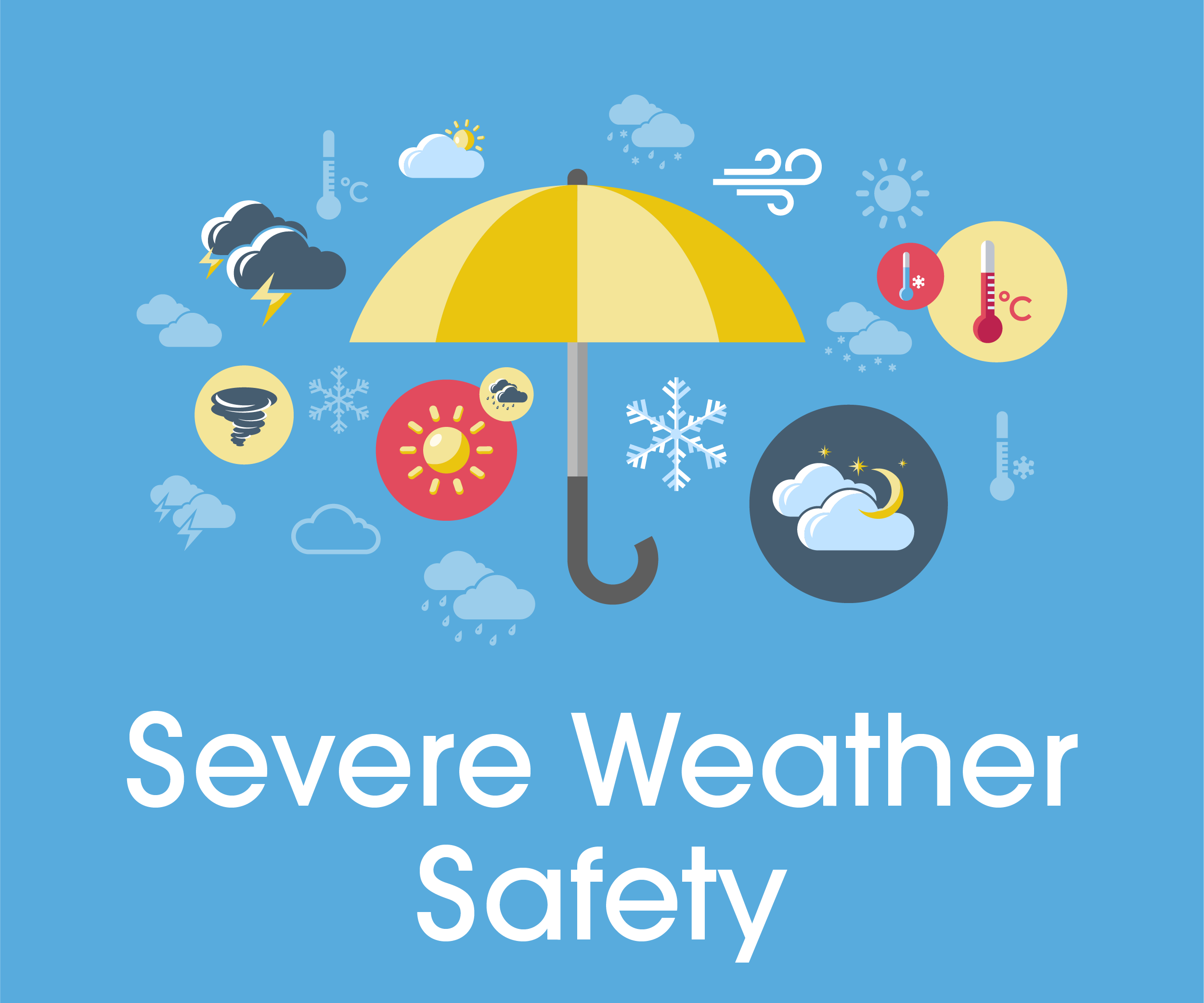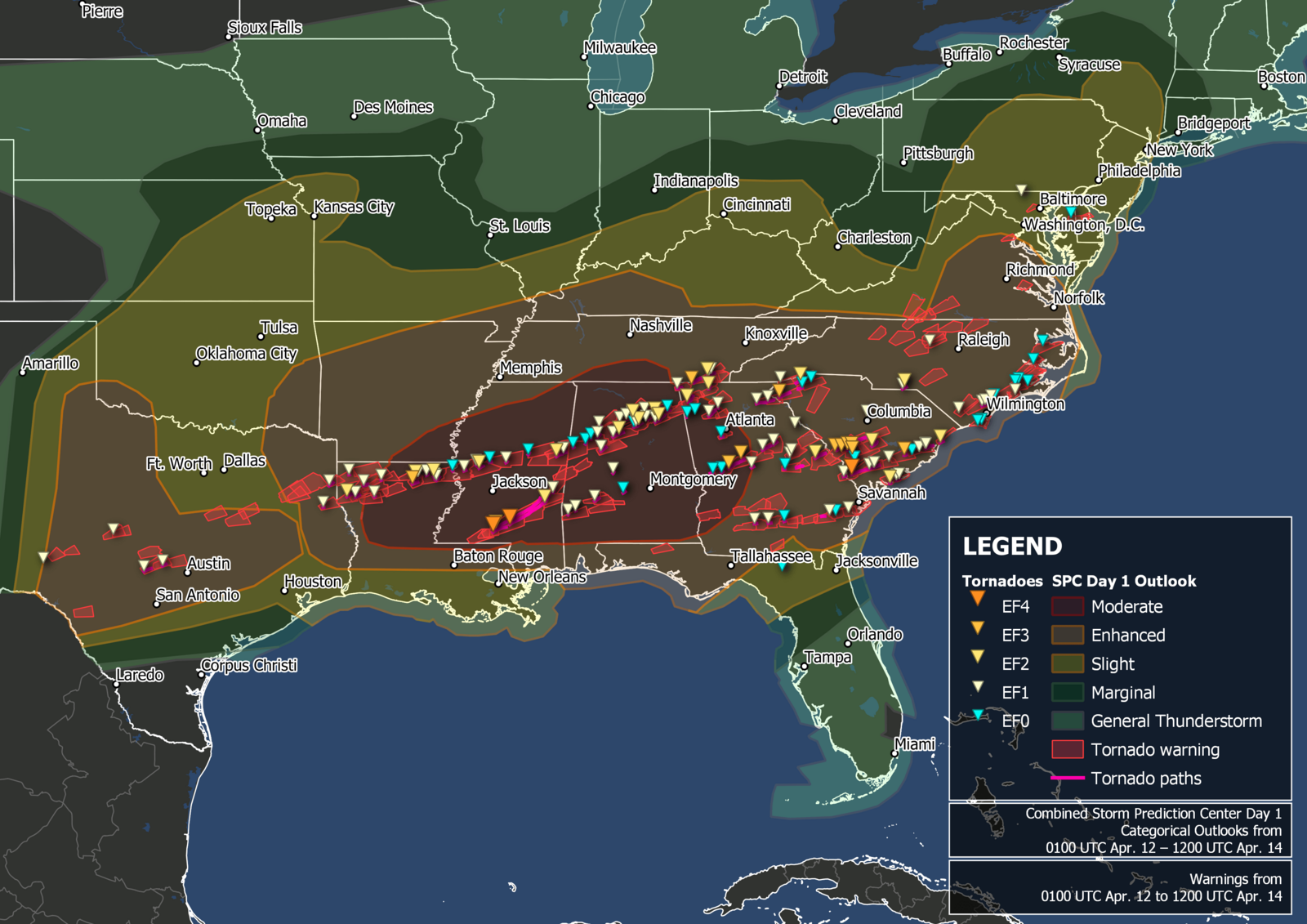Protecting Yourself And Your Family During Floods: Severe Weather Awareness

Table of Contents
Understanding Flood Risks and Preparation
Before a flood strikes, understanding your risk and preparing a comprehensive plan are crucial. Proactive measures significantly improve your chances of surviving and minimizing the impact on your family.
Identifying Flood-Prone Areas
Knowing if your home is situated in a flood-prone area is the first step. Several resources can help you assess your risk:
- Using FEMA flood maps: The Federal Emergency Management Agency (FEMA) provides detailed flood maps for the entire United States. Check these maps to see if your property lies within a flood plain or high-risk zone.
- Checking local history of flooding: Research your local area's history. Contact your local government or historical society; they may have records of past flooding events. This historical data offers valuable insight into potential future risks.
- Observing geographical features: Pay close attention to your surroundings. Low-lying areas, proximity to rivers, streams, or bodies of water, and poor drainage are all indicators of higher flood risk.
Understanding your risk level is not just about property; it's about life safety. High-risk areas require more stringent preparedness measures.
Creating a Family Emergency Plan
A well-defined family emergency plan is essential for effective flood response. This plan should be practiced regularly to ensure everyone knows their roles and responsibilities.
- Establishing communication methods: Designate a primary contact person outside of your immediate area. Ensure everyone knows how to reach this person, and establish a secondary contact as a backup. Familiarize yourselves with local emergency alert systems and sign up for relevant notifications.
- Packing essential supplies: Prepare an emergency kit containing at least three days' worth of water (one gallon per person per day), non-perishable food, a first-aid kit, essential medications, copies of important documents (insurance, IDs), flashlights, batteries, and a portable radio.
- Practicing the plan: Conduct regular family drills to simulate evacuation procedures. This practice builds familiarity and confidence, ensuring everyone understands their roles in an actual emergency.
This detailed plan will ensure your family's safety and minimize chaos during a crisis.
Flood Insurance and Financial Preparedness
Flood insurance is often overlooked, but it's a critical component of flood preparedness. Homeowner's insurance typically doesn't cover flood damage.
- Types of flood insurance: Explore different types of flood insurance policies available through the National Flood Insurance Program (NFIP) or private insurers. Understand the coverage limitations of each policy and choose one that suits your needs.
- Understanding policy coverage: Carefully review your policy to understand what is and is not covered. Be aware of deductibles and waiting periods.
- Creating a financial emergency fund: Set aside funds specifically for potential flood-related expenses, including temporary housing, repairs, and replacement of damaged belongings.
Having adequate insurance coverage and financial reserves significantly eases the burden of recovery after a flood.
Responding to Flood Warnings and Evacuations
Swift and decisive action is vital when flood warnings are issued. Knowing what to do and when to act can save lives.
Recognizing Flood Warning Signals
Different types of warnings convey varying levels of urgency. Understanding the difference is essential.
- Understanding the urgency of each type of alert: A flood watch indicates the possibility of flooding; a flood warning means flooding is imminent or already occurring; a flood advisory suggests potential flooding in specific areas.
- Sources of alerts: Stay informed by monitoring local news broadcasts, weather radio, and official government websites like the National Weather Service. Sign up for emergency alerts on your mobile device.
Responding appropriately to each type of warning is critical to mitigating risk.
Safe Evacuation Procedures
If an evacuation order is issued, follow these steps:
- Securing your home: Turn off all utilities (gas, electricity, water) to prevent further hazards. Move valuable items to higher ground or, if possible, take them with you.
- Using designated evacuation routes: Use the pre-planned evacuation routes outlined in your family emergency plan. Avoid flooded areas, as water depth may be deceiving.
- Following instructions from emergency services: Obey the instructions provided by emergency personnel and law enforcement. They are trained to manage the situation effectively.
Prompt and safe evacuation is paramount to protect your family.
Staying Safe During a Flood
If evacuation isn't possible, prioritize your safety:
- Seeking higher ground within your home: Move to the highest level of your home, preferably to a sturdy upper floor.
- Avoiding contact with floodwater: Floodwater is often contaminated with sewage and hazardous materials. Avoid contact at all costs.
- Monitoring conditions: Keep a close watch on the floodwater levels and stay informed about the changing situation through weather reports and official announcements.
Staying informed and taking proactive steps within your home will minimize the risks.
Post-Flood Recovery and Safety
Post-flood recovery requires careful planning and safety precautions.
Returning Home Safely After a Flood
Returning home too soon can be dangerous.
- Checking for structural damage: Inspect your home for structural damage before entering. Look for signs of weakened foundations, cracks in walls, and damage to the roof.
- Avoiding contact with contaminated water: Floodwater poses significant health risks due to contamination. Avoid wading through it. Wear protective gear if you must enter.
- Reporting damage to authorities: Report any damage to your property and infrastructure to the appropriate authorities (local government, insurance company).
Careful inspection and reporting are crucial for safe recovery.
Cleaning and Disinfecting Flood-Damaged Property
Cleaning up after a flood is a hazardous task.
- Using appropriate safety gear: Wear protective clothing, gloves, and a mask to avoid exposure to contaminated materials.
- Removing damaged materials: Dispose of waterlogged materials properly, following local guidelines.
- Using disinfectants: Use appropriate disinfectants to sanitize affected areas.
Thorough cleaning and disinfection are essential to prevent mold growth and health hazards.
Seeking Assistance and Support
Don't hesitate to seek help from various agencies and organizations.
- FEMA assistance: Contact FEMA for potential financial assistance and other support services.
- Red Cross support: The Red Cross often provides temporary shelter, food, and other essential supplies.
- Local charities: Many local charities provide assistance during recovery efforts.
- Insurance claims: File your insurance claims promptly and follow the instructions provided by your insurance company.
Numerous resources are available to help you recover from a flood. Utilize them effectively.
Conclusion
Protecting yourself and your family during floods requires comprehensive preparedness, swift response, and careful recovery. Creating a detailed family emergency plan, understanding your flood risk, securing adequate flood insurance, and staying informed about severe weather alerts are crucial steps. Remember, proactive flood preparedness minimizes the devastating impact of these natural disasters. Take action today by creating a flood safety plan, ensuring you have appropriate flood insurance, and familiarizing yourself with local emergency response protocols. Visit the FEMA website ([link to FEMA website]) for additional resources and information on flood safety and mitigation. By taking these steps, you'll enhance your family's safety and resilience in the face of flooding.

Featured Posts
-
 Nike Running Shoes 2025 Choosing The Right Shoe For Your Needs
May 26, 2025
Nike Running Shoes 2025 Choosing The Right Shoe For Your Needs
May 26, 2025 -
 Breaking F1 News Mercedes Probes Lewis Hamilton Update
May 26, 2025
Breaking F1 News Mercedes Probes Lewis Hamilton Update
May 26, 2025 -
 Flash Flood Warnings And April 2 Tornado Count Update April 4 2025
May 26, 2025
Flash Flood Warnings And April 2 Tornado Count Update April 4 2025
May 26, 2025 -
 Uncovering The Countrys Rising Business Centers A Detailed Map
May 26, 2025
Uncovering The Countrys Rising Business Centers A Detailed Map
May 26, 2025 -
 The Week That Derailed Joe Bidens Post Presidency A Comprehensive Look
May 26, 2025
The Week That Derailed Joe Bidens Post Presidency A Comprehensive Look
May 26, 2025
Latest Posts
-
 Tottenham In Race For Ligue 1 Star Confirmed Departure And Transfer Timeline
May 28, 2025
Tottenham In Race For Ligue 1 Star Confirmed Departure And Transfer Timeline
May 28, 2025 -
 Tottenham Target Ligue 1 Winger Transfer Update And Key Dates
May 28, 2025
Tottenham Target Ligue 1 Winger Transfer Update And Key Dates
May 28, 2025 -
 How To Play Euromillions And Win The 202m Jackpot
May 28, 2025
How To Play Euromillions And Win The 202m Jackpot
May 28, 2025 -
 Tottenham Hotspurs Ligue 1 Winger Pursuit Timeline And Confirmation
May 28, 2025
Tottenham Hotspurs Ligue 1 Winger Pursuit Timeline And Confirmation
May 28, 2025 -
 The 202m Euromillions Your Guide To The Lotterys Biggest Prize
May 28, 2025
The 202m Euromillions Your Guide To The Lotterys Biggest Prize
May 28, 2025
